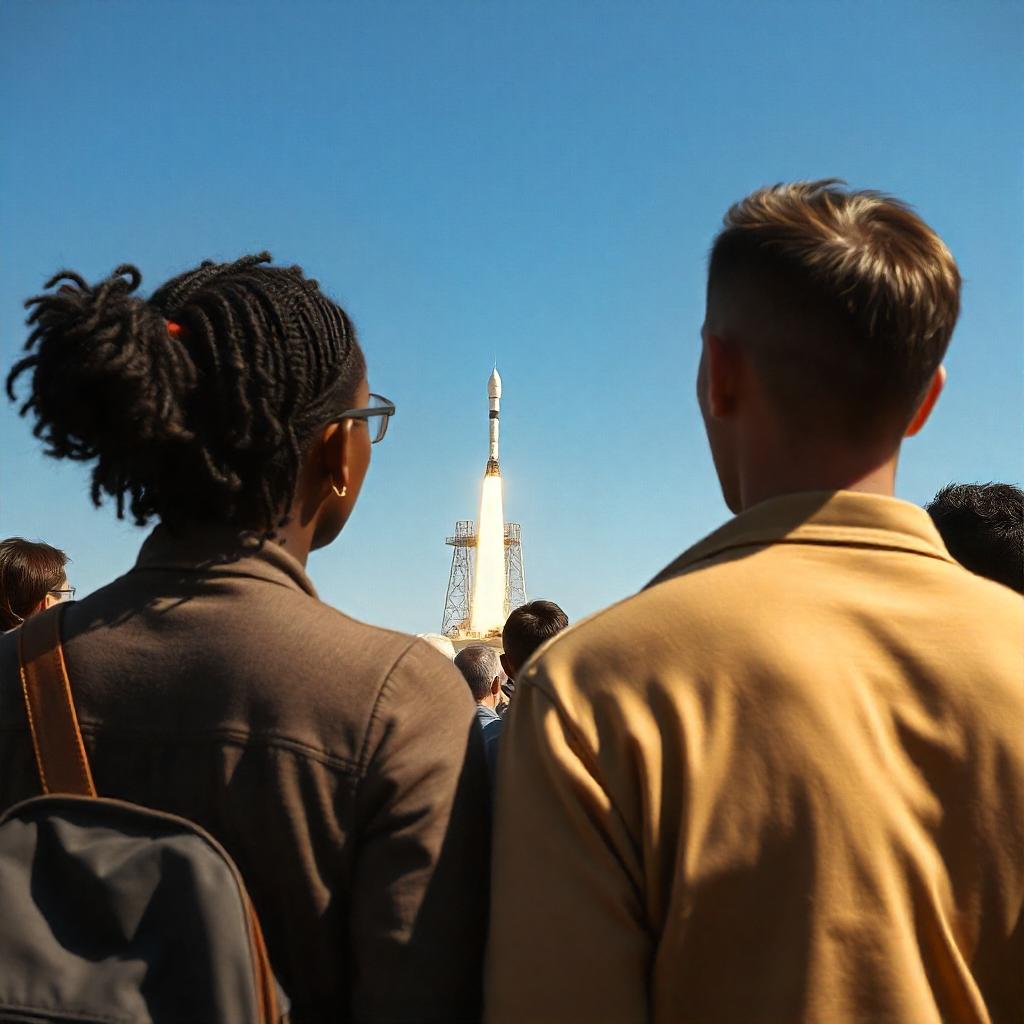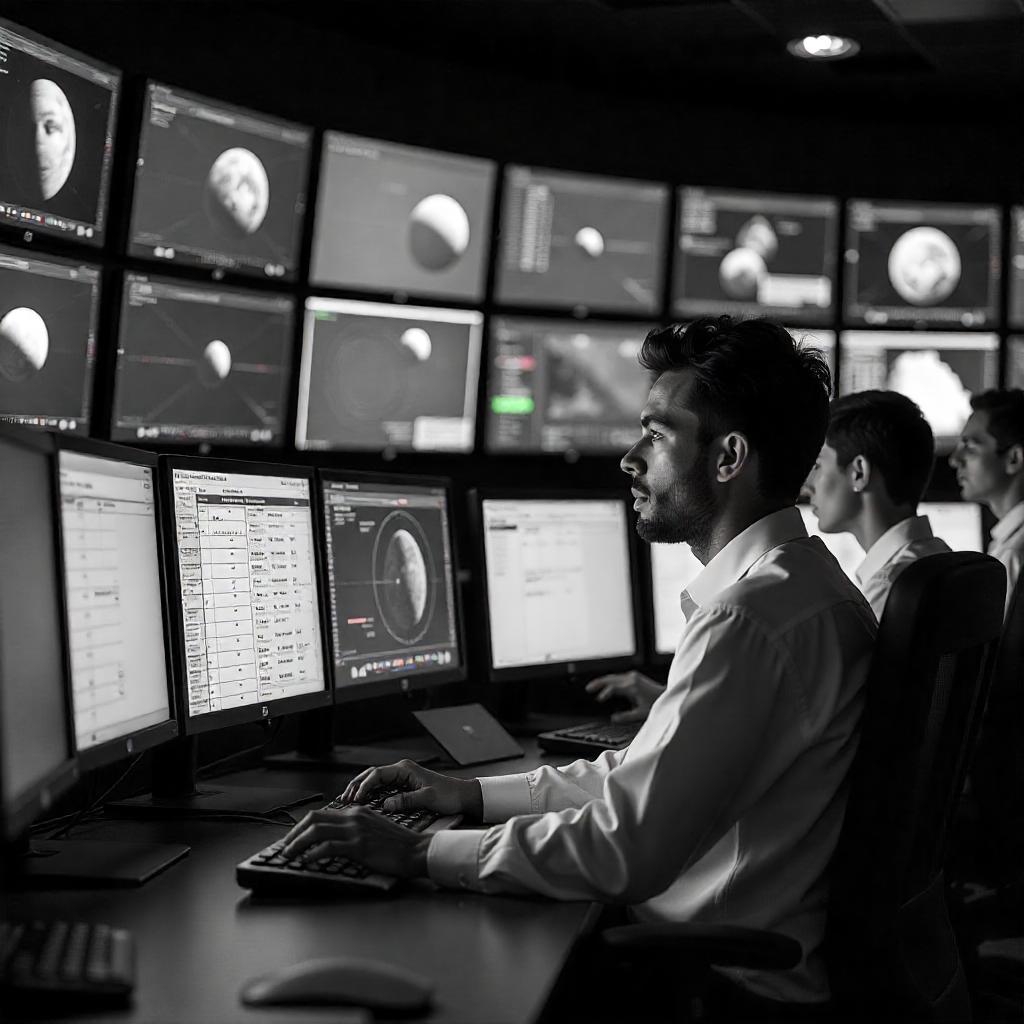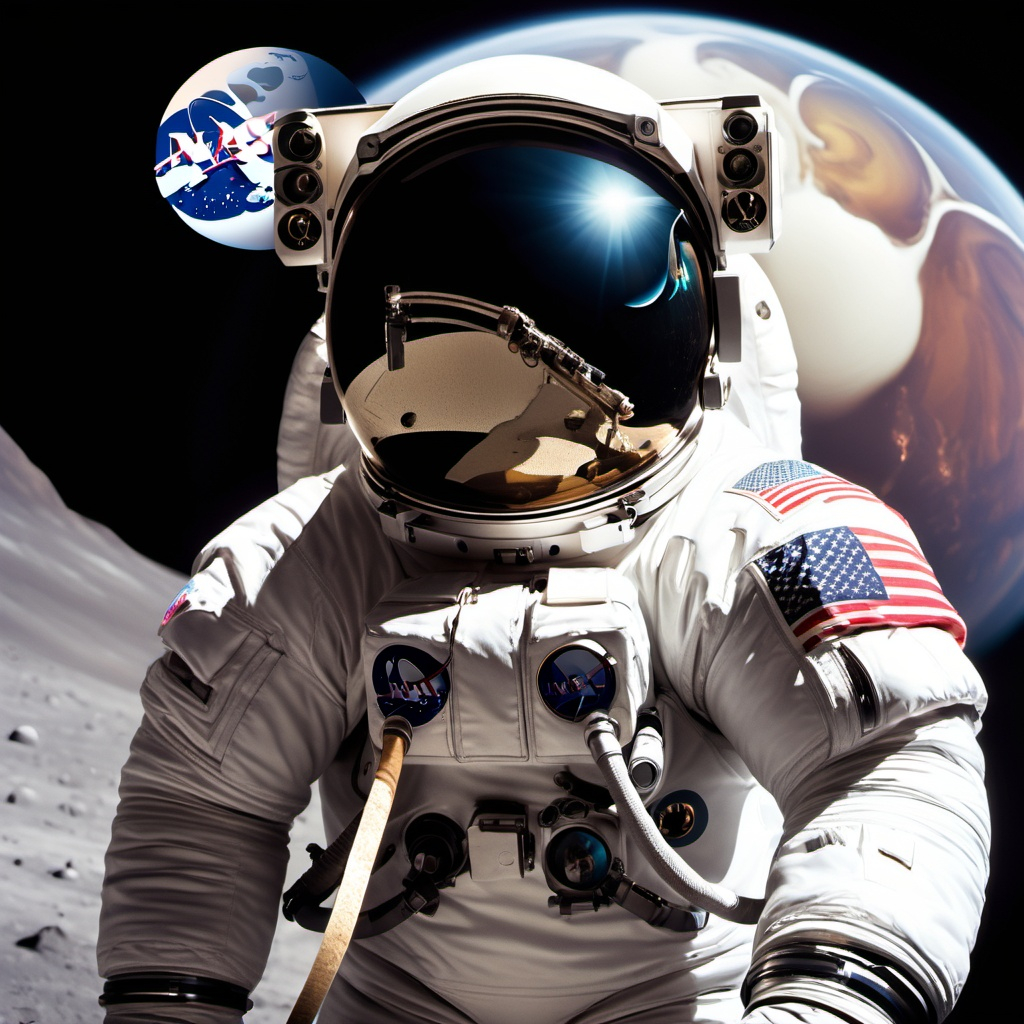Introduction to NASA
NASA Established on July 29, 1958, NASA was formed in response to the Soviet Union’s launch of Sputnik, the first artificial satellite, which marked the beginning of the space race.

NASA Historical Background
NASA’s origins can be traced back to the National Advisory Committee for Aeronautics (NACA), established in 1915 to address aviation challenges. The launch of Sputnik led to an urgent need for the U.S. to advance its own space technology, prompting the creation of NASA.
Key Milestones:
- 1969: Apollo 11 successfully lands the first humans on the Moon.
- 1975: The Apollo-Soyuz Test Project marks the first international human spaceflight.
- 1998: The International Space Station (ISS) program begins, a collaboration involving multiple countries.
NASA Mission and Vision
NASA’s core mission encompasses:
- Human Exploration: Sending humans to destinations beyond Earth.
- Scientific Discovery: Understanding the universe and our place within it.
- Technology Development: Innovating technology for space exploration and improving life on Earth.

Key Projects and Programs
1. Apollo Program
The Apollo program (1961-1972) was NASA’s endeavor to land humans on the Moon and bring them safely back to Earth. Key missions included:
- Apollo 11: Neil Armstrong and Buzz Aldrin became the first and second humans to walk on the Moon in July 1969.
- Apollo 13: The infamous “successful failure” where an in-flight accident threatened the lives of the crew, showcasing NASA’s ingenuity in problem-solving.
2. Space Shuttle Program
Running from 1981 to 2011, the Space Shuttle program enabled numerous missions, including satellite deployment, scientific research, and construction of the ISS. Key highlights include:
- Hubble Space Telescope Deployment: Launched in 1990, Hubble has provided unprecedented views of the universe.
- Assembly of the ISS: The shuttle played a crucial role in building and servicing the ISS.
3. International Space Station (ISS)
The ISS, a collaborative effort among multiple nations, serves as a microgravity laboratory for scientific research and technology demonstrations. Key facts:
- Launched: 1998
- Crew Capacity: Up to six astronauts
- Scientific Research: Studies range from biology and human biology to physics and astronomy.

4. Mars Exploration Program
NASA’s Mars program has focused on understanding the planet’s geology, climate, and potential for life. Notable missions include:
- Mars Rovers: Spirit, Opportunity, Curiosity, and Perseverance have provided invaluable data about Mars’ surface and atmosphere.
- Mars Sample Return Mission: Planned for the 2030s, this ambitious project aims to bring Martian samples back to Earth for detailed analysis.
5. Artemis Program
The Artemis program aims to return humans to the Moon by the mid-2020s, with a long-term vision for sustainable lunar exploration and preparing for future missions to Mars. Highlights include:
- Artemis I: An uncrewed mission that successfully tested the Space Launch System (SLS) and Orion spacecraft.
- Artemis II: Planned as the first crewed mission to orbit the Moon, paving the way for Artemis III, which aims to land astronauts on the lunar South Pole.
6. James Webb Space Telescope (JWST)
Launched in December 2021, JWST is designed to observe the universe in infrared wavelengths. It aims to:
- Study the Formation of Stars and Galaxies: Providing insights into the early universe.
- Exoplanet Research: Investigating the atmospheres of distant planets for signs of habitability.
NASA Technological Innovations
NASA has been at the forefront of numerous technological advancements, contributing to both space exploration and life on Earth. Innovations include:

- Materials Science: Developments in heat-resistant materials, insulating fabrics, and more.
- Robotics: Advanced robotic systems for exploration, such as the Mars rovers and robotic arms on the ISS.
NASA Challenges and Future Endeavors
NASA faces several challenges in its ongoing quest for exploration:
- Budget Constraints: Funding levels directly affect the scope and pace of missions.
- Technological Hurdles: Developing reliable technology for long-duration space missions.
- International Collaboration: Navigating geopolitical challenges while working with international partners.
Future missions will focus on:
- Mars Colonization: Preparing for human settlement on Mars.
- Asteroid Exploration: Potential resource utilization from near-Earth asteroids.
- Interstellar Probes: Initiatives like the Voyager missions that aim to explore beyond our solar system.
Conclusion
NASA has played a pivotal role in expanding human knowledge of space and Earth. From landing on the Moon to exploring distant planets and developing cutting-edge technologies, NASA continues to inspire generations. As humanity stands on the brink of a new era in space exploration, NASA’s vision of reaching new frontiers remains steadfast.
This blog serves as an overview, encapsulating NASA’s rich history and diverse projects. Let me know if you’d like to delve deeper into specific missions or topics!
Here’s an in-depth exploration of NASA’s major discoveries and contributions to our understanding of space, showcasing the breadth and significance of its work.
NASA’s Discoveries: Expanding Our Understanding of Space
Introduction
Since its inception in 1958, NASA has been at the forefront of space exploration, making groundbreaking discoveries that have reshaped our understanding of the universe. From landing humans on the Moon to exploring the distant reaches of our solar system, NASA’s missions have provided invaluable insights into the cosmos. This blog will delve into the key discoveries made by NASA, highlighting their importance and the science behind them.
The Apollo Program: Moon and Beyond

1. Lunar Discoveries
The Apollo program (1961-1972) marked a watershed moment in human exploration. Apollo 11, with astronauts Neil Armstrong and Buzz Aldrin, successfully landed on the Moon on July 20, 1969. Key discoveries from Apollo missions include:
- Lunar Geology: The analysis of Moon rocks revealed a geological history distinct from Earth, including the presence of basalt and anorthosite.
- Regolith Samples: Lunar soil samples helped scientists understand the Moon’s formation and its volcanic activity, providing insights into planetary formation.
- Water Ice: Subsequent missions, like Apollo 17, suggested the presence of water ice in permanently shadowed craters, crucial for future lunar exploration.
NASA Space Telescopes: Unveiling the Universe
2. Hubble Space Telescope
Launched in 1990, the Hubble Space Telescope has revolutionized our understanding of the universe through its stunning imagery and data collection.
- Expansion of the Universe: Hubble provided critical data that led to the discovery of the universe’s accelerated expansion, a phenomenon attributed to dark energy.
- Exoplanets: Hubble has detected and analyzed the atmospheres of several exoplanets, contributing to the study of potential habitability beyond Earth.
- Galaxy Formation: Observations of distant galaxies have illuminated the processes of galaxy formation and evolution, showing how they merge and interact over cosmic timescales.
3. Chandra X-ray Observatory
Launched in 1999, Chandra observes X-rays emitted by high-energy regions of the universe.
- Black Holes: Chandra has provided evidence for the existence of supermassive black holes at the centers of galaxies, including our Milky Way.
- Cosmic Hot Spots: It has observed the remnants of exploded stars and the regions surrounding black holes, enhancing our understanding of cosmic events and their aftermath.
NASA Mars Exploration: A Journey to the Red Planet
4. Mars Rovers
NASA’s rovers—Spirit, Opportunity, Curiosity, and Perseverance—have transformed our knowledge of Mars.
- Water History: Rovers like Curiosity found evidence of ancient riverbeds and lakebeds, indicating that liquid water existed on Mars in the past, crucial for understanding the planet’s habitability.
- Organic Molecules: Curiosity discovered organic molecules, hinting at the potential for past life on Mars and the planet’s complex chemistry.
- Mars Sample Return: Perseverance is currently collecting samples that may one day be returned to Earth for detailed analysis, aiming to unlock the mysteries of Martian geology and biology.
Outer Solar System: Voyager Missions
5. Voyager Probes
Launched in 1977, the Voyager 1 and Voyager 2 probes have traveled beyond our solar system, providing invaluable data about the outer planets.
- Jupiter and Saturn: Voyager 1 and 2 delivered stunning images and data about the atmospheres, rings, and moons of these gas giants, including the discovery of active volcanism on Jupiter’s moon, Io.
- Interstellar Space: Voyager 1 entered interstellar space in 2012, providing insights into the heliosphere and the conditions beyond our solar system.
- Pale Blue Dot: Voyager 1 captured the famous “Pale Blue Dot” photograph of Earth from billions of miles away, emphasizing our planet’s fragility in the vastness of space.
Astrobiology and Exoplanets
6. Kepler Space Telescope
Launched in 2009, Kepler revolutionized the search for exoplanets.
- Exoplanet Discovery: Kepler identified thousands of exoplanets, many located in the habitable zone of their stars, raising the possibility of finding life beyond Earth.
- Planetary Systems: The data collected revealed the diversity of planetary systems, showing that they can be quite different from our own solar system.
The Sun and Space Weather
7. Solar Dynamics Observatory (SDO)
Launched in 2010, the SDO observes the Sun’s activity and its influence on space weather.
- Solar Flares and Coronal Mass Ejections: SDO has captured high-resolution images of solar flares and coronal mass ejections, improving our understanding of solar activity and its impact on Earth.
- Helioseismology: By studying waves on the Sun’s surface, SDO provides insights into its internal structure and dynamics.

Earth Science and Climate Change
8. Earth Observing System (EOS)
NASA’s Earth science missions focus on understanding climate change and environmental changes.
- Climate Monitoring: Satellites like Terra and Aqua monitor Earth’s climate, tracking changes in temperature, ice cover, and vegetation.
- Natural Disasters: NASA’s Earth science missions provide critical data for understanding and predicting natural disasters like hurricanes, floods, and wildfires.
Future Missions and Discoveries
9. Artemis Program
NASA’s Artemis program aims to return humans to the Moon and establish a sustainable presence, paving the way for future Mars exploration.
- Lunar Gateway: The planned Lunar Gateway will serve as a staging point for missions to the lunar surface and beyond, facilitating deeper exploration of the solar system.
- Technological Innovations: Artemis will test new technologies and systems needed for long-duration human missions, crucial for future Mars missions.
10. Mars Sample Return Mission
The upcoming Mars Sample Return mission aims to bring Martian soil and rock samples back to Earth for analysis, potentially providing definitive evidence of past life on Mars.
Conclusion
NASA’s discoveries have profoundly expanded our understanding of space, revealing the complexities of the universe and our place within it. From lunar landings to the exploration of distant planets and the search for exoplanets, NASA continues to push the boundaries of human knowledge. As we look to the future, ongoing and upcoming missions promise to unveil even more of the universe’s secrets, fueling our curiosity and inspiring future generations.
This blog encapsulates key discoveries made by NASA across various domains of space exploration. If you have specific areas you’d like to explore further or additional details needed, just let me know!
NASA’s Mars exploration projects encompass a variety of missions aimed at understanding the planet’s geology, climate, and potential for past or present life. Here’s a summary of what NASA says about its Mars projects:
Overview of NASA’s Mars Projects
- Goals of Mars Exploration:
- Search for Life: Investigating past and present conditions on Mars to determine if life ever existed there.
- Climate and Geology: Studying the planet’s climate and geological history to understand its evolution.
- Sample Return: Collecting and returning Martian samples to Earth for detailed analysis.
- Key Missions:
- Mars Rovers:
- Curiosity: Launched in 2011, Curiosity has been exploring Gale Crater, examining rocks and soil to assess past habitability. It has discovered evidence of ancient riverbeds and organic molecules.
- Perseverance: Launched in 2020, Perseverance is tasked with searching for signs of ancient life and collecting samples for future return to Earth. It is also testing new technologies for future human exploration.
- Mars Helicopter (Ingenuity):
- A technology demonstration that successfully flew on Mars, Ingenuity provides aerial scouting for Perseverance and demonstrates the feasibility of powered flight in the thin Martian atmosphere.
- Mars Sample Return:
- NASA plans a collaborative mission with the European Space Agency (ESA) to bring Martian samples back to Earth. This ambitious project involves several stages, including launching a lander, retrieving samples, and sending them back via a rocket.
- Mars Reconnaissance Orbiter (MRO):
- Launched in 2006, MRO studies the Martian atmosphere and surface, providing detailed images and data that help select landing sites for future missions and monitor seasonal changes on the planet.
- Mars Atmosphere and Volatile Evolution (MAVEN):
- This mission investigates the Martian atmosphere, studying how it has changed over time and its impact on the planet’s climate.
- Future Plans:
- NASA aims to send humans to Mars in the 2030s, building on the knowledge gained from robotic missions. The Artemis program will first establish a sustainable human presence on the Moon, serving as a testing ground for technologies needed for Mars exploration.
Conclusion
NASA’s Mars projects represent a comprehensive approach to exploring the Red Planet. By combining robotic missions with ambitious plans for human exploration, NASA aims to unlock the mysteries of Mars and its potential to have supported life, as well as prepare for future human missions.
If you’re interested in more specific details about any particular mission or aspect, feel free to ask!

Hey there! I’m at work surfing around your blog from my new apple iphone! Just wanted to say I love reading your blog and look forward to all your posts! Keep up the outstanding work!
I am curious to find out what blog system you have been utilizing? I’m experiencing some small security problems with my latest website and I’d like to find something more safe. Do you have any recommendations?
Good site! I truly love how it is easy on my eyes and the data are well written. I’m wondering how I might be notified whenever a new post has been made. I’ve subscribed to your feed which must do the trick! Have a great day!
I am not very wonderful with English but I come up this really leisurely to read .